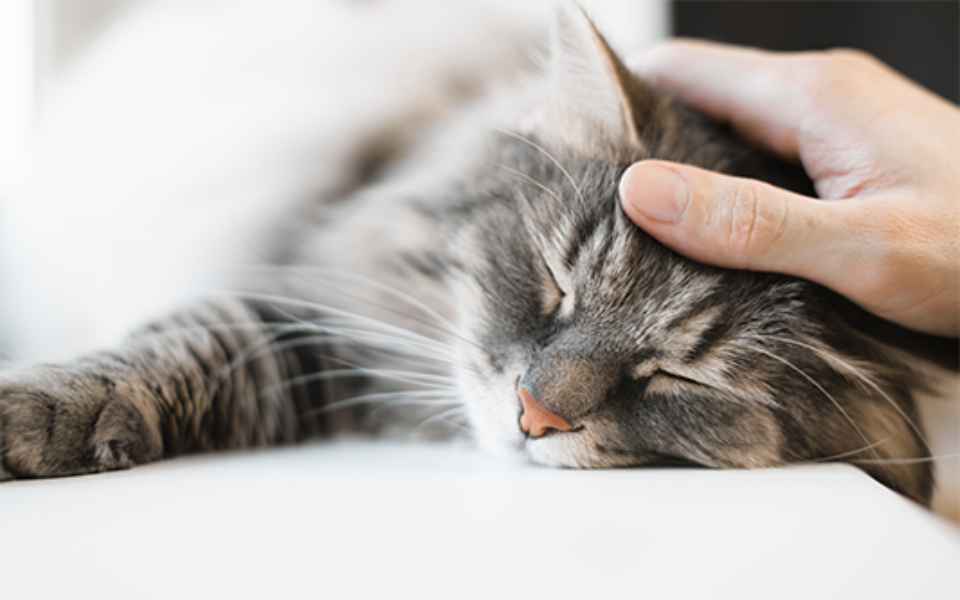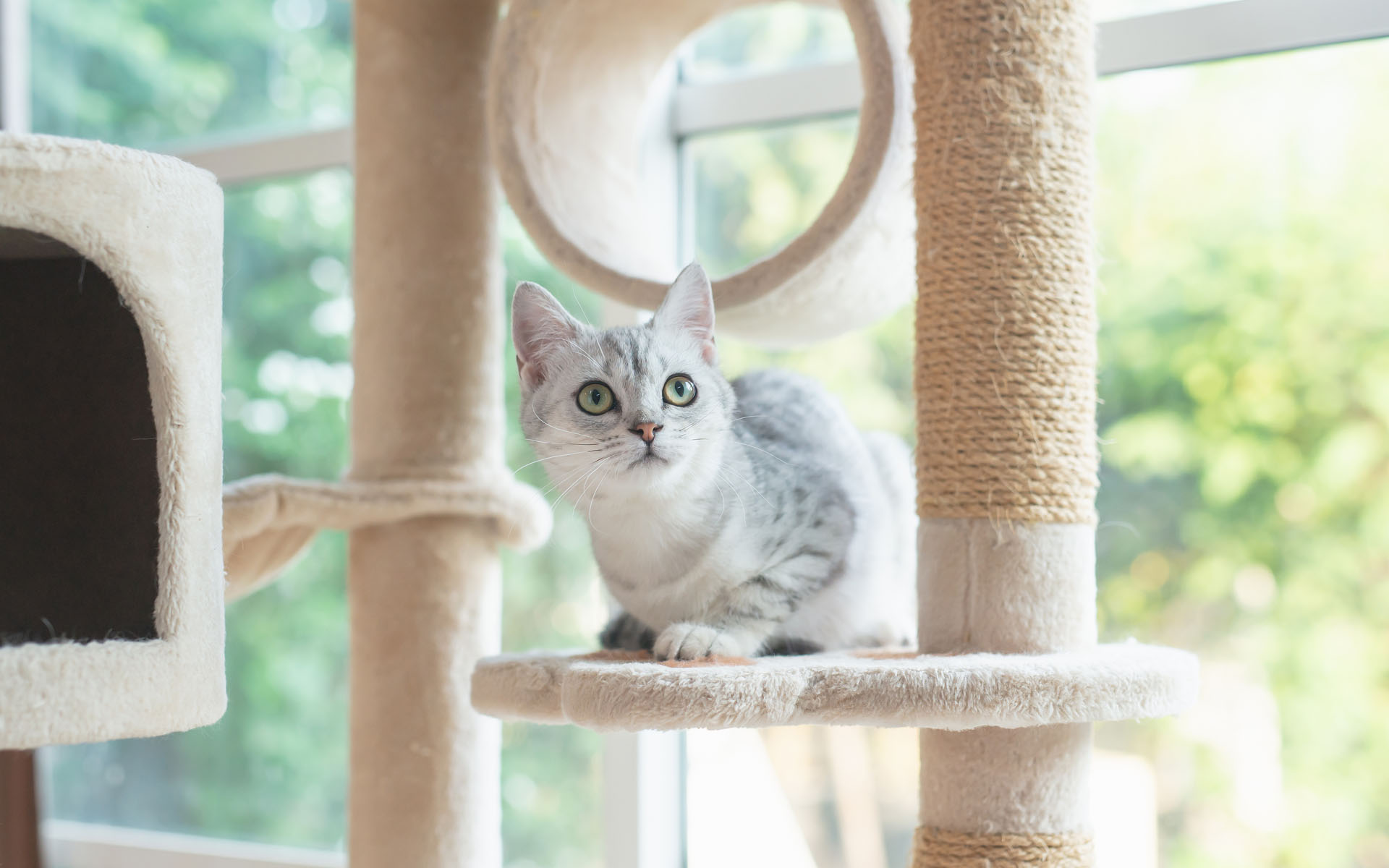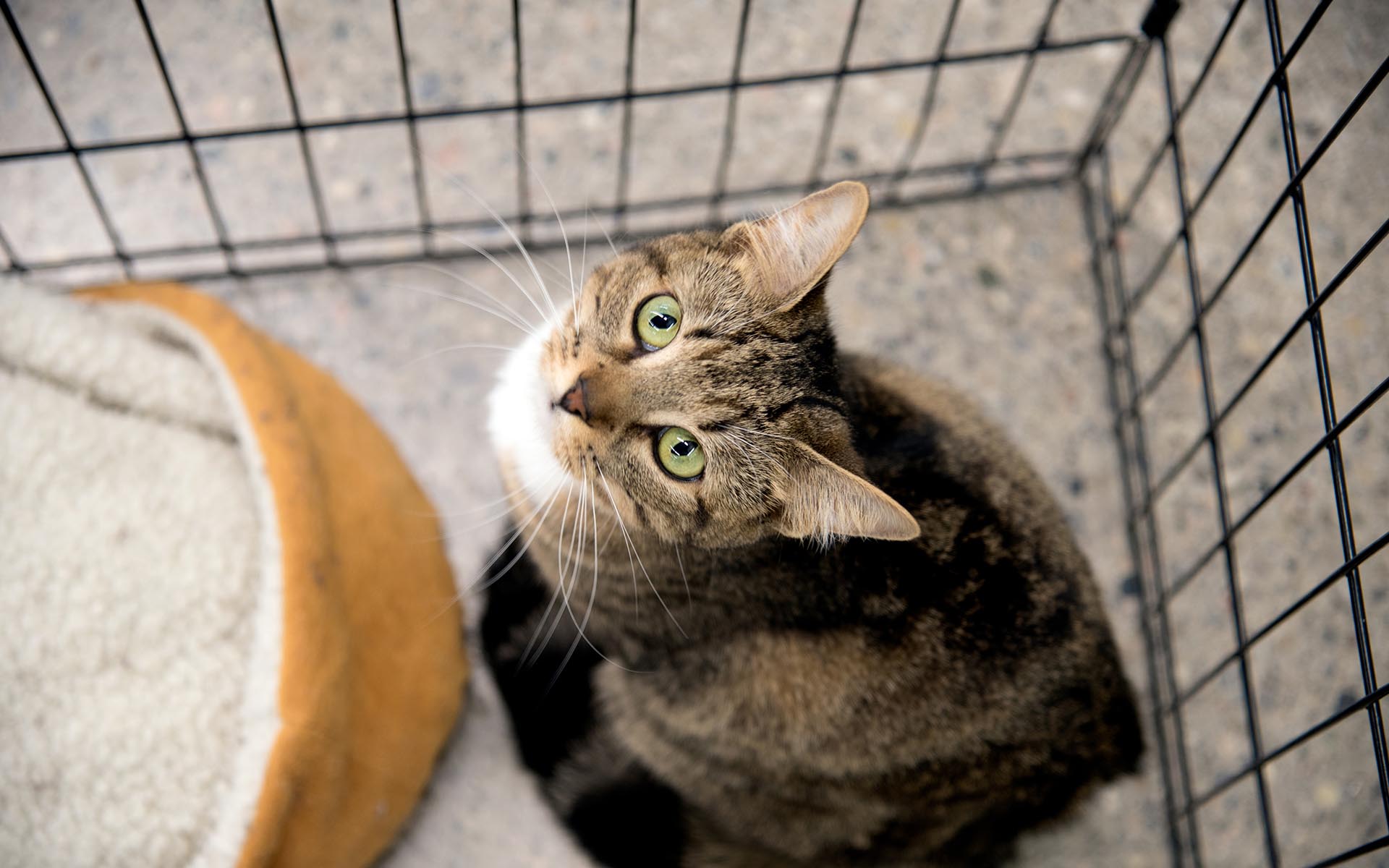Anxiety takes place in your cat’s mind in the face of a perceived threat or danger. Yet it can express itself through physical signs, such as excessive grooming, changes in eating habits or your pet becoming aggressive. Here’s how you can find out what scares your furry friend and how you can help them manage their fear.
Understanding your cat’s anxiety
Is it anxiety or something else?
First, let your veterinarian know about any symptoms or changes in your cat’s behaviour that you’ve observed. They may recommend diagnostic tests to rule out any underlying medical condition and provide you with a multi-approach treatment plan.
Identify what triggers your cat’s anxiety.
Observe when and where your cat shows signs of anxiety to narrow the cause. Maybe they feel threatened after you’ve adopted a new pet. Perhaps they’re scared of loud noises coming from a nearby construction site or the frequent barking of a neighbour’s dog. They could have a hard time adapting to sudden changes in their environment, such as moving into a new home.
Helping your cat manage their anxiety
Act on your cat’s anxiety triggers.
Remove or lessen your cat’s exposure to their anxiety triggers whenever possible. Going back to some of the examples above, you could confine a new pet to a closed room and introduce them to your cat gradually. If loud noises are a problem, set up a comfortable “safe space” for your cat (with food, water, toys and cozy blankets in a cardboard box) in the basement where it’s quieter
You may also make careful use of desensitization, a technique which exposes your cat progressively and in a controlled manner to the source of their fear. If they’re scared of a dog barking, play a similar sound at low volume in regular sessions. Watch your cat’s body language for signs of stress or tension. Over time, gradually increase the volume, always making sure your pet remains calm.
Modify your cat’s behaviour through positive reinforcement.
Never punish your cat for responding inappropriately to their anxiety trigger, which is likely to exacerbate their fear. Instead, reward correct behaviour and responses to create positive associations in your cat’s mind. For example, encourage them to explore their new home one room at a time by hiding treats.
Make changes to your cat’s environment.
If you have little control over what triggers your cat’s anxiety and if using positive reinforcement is difficult – for example, if your cat feels lonely while you’re at work – make your pet’s environment more exciting or comforting. A window hammock can provide your cat with a view of the outdoors – including birds! – as ongoing entertainment. Elevated spaces such as shelves or a tall cat tree can help them feel safe.
Consider using natural supplements for support.
To increase your pet’s receptivity to the methods above or help manage stress associated with predictable events such as moving, travelling by car or thunderstorms, ask your veterinarian if natural supplements could help. For example, Zylkene contains alpha-casozepine, an ingredient derived from a milk protein with natural calming properties.









